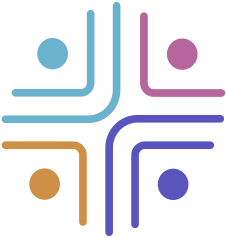With turbulent economic activity and a shifting job market to match, businesses can only make decisions as good as the data at their disposal allows. Organizations invest heavily in acquiring data to help drive actions that will save their company resources, such as time and money, in the long run. There is no greater need for this than for talent acquisition teams who are tasked with finding and recruiting the next generation of company leaders. Ironically, the usage of these tools can deplete budgets before recruitment teams reach their goals. Identifying data’s role in the recruitment process and the growing costs of data is important to understand the changing landscape of recruitment.
Data plays a crucial role in each step of the recruiting process, yet 40% of talent acquisition leaders report concern with the high cost of purchasing data compared to how much of it is actually utilized. This leaves recruiters in a difficult position. When determining which candidates possess the correct skillset for the job, a data-driven approach is meant to organize your options quicker than a human-driven approach. Implementing tools can also eliminate any human bias that may affect the process. With the cost of a bad hire being up to 30% of an employee’s yearly salary, investing in data that can help weed out poor fits can be worth the investment.
Automate What You Can
One of the places recruiters look to automate is job listings. However, the hidden costs of some programs can dilute their budgets faster than they can fill a role. Such can be the case when utilizing features like pay-per-click (PPC), where job sites charge advertisers based on the number of times site visitors interact with their job listing. The upside is that recruiters can guarantee their ad does not exceed their budget allotment, and these ads are set to automatically expire once a certain cost is reached. The downside is that impressions do not always translate to applications.
On the upside, however, the data recruiters pick up along the way can help inform future decisions when it comes to filling openings. Recruiters can collect data on what candidates in similar roles are expecting to make salary-wise, what level of education individuals have generally achieved in the space you are hiring for, and how broad the talent pool is. Recruiters can also gain insight into how much time candidates spend engaging with their listing, which can help them gauge its effectiveness.
Businesses utilize a plethora of tools to help them source the candidates they need. Talent acquisition managers may find themselves with the issue of purchasing several data tools that address different recruiting needs. This introduces the obstacle of poor data integration between service tools, often leading to more confusion and work on the recruiter’s end. The added costs of each tool can contribute to a low return on investment (ROI), as recruiters find themselves paying twice for the same service on different platforms.
Let’s dive into the numbers, with the latest talent sourcing and recruitment advertising benchmarks!
Ready to Let the Data Do the Talking?
Data-Targeting Can Save You Time and Resources
If recruiters utilize the correct data-targeting strategies, they can optimize results to ensure the right qualified candidates are being reached. When curating your targets, it is essential to target candidates based on what they are actively searching. Candidates that are actively engaging in your business’s space are more likely to be interested in joining your company. Target individuals that have already interacted with your business’s ads, websites, or apps, as they have already demonstrated interest in learning more. Recruiters can also target based on who a candidate is, what they’ve studied, and what their interests are. The goal is to pinpoint a particular applicant pool and weed out the misfits.
With an abundance of demand for efficient and useful data, talent recruiters can find themselves dealing with a situation of data overload if systems are not properly organized. Two-thirds (64%) of talent acquisition professionals report being less than satisfied with their talent acquisition tech stack. More tools is not the solution, rather better data integration that makes sure the data they are purchasing is utilized to its max benefit are needed. A consolidated approach that helps recruiters reach the right candidates by merging tools is the key.
In a competitive labor market, effective recruitment and staffing requires a data-driven approach, as most job sites optimize for the easy metrics (clicks or cost-per-click), instead of the important ones (number of hires or cost-per-hire). But we know your goal: more hires, at a lower cost.
See us in action to boost your company’s productivity. Follow us on Twitter and LinkedIn for more hiring insights!















